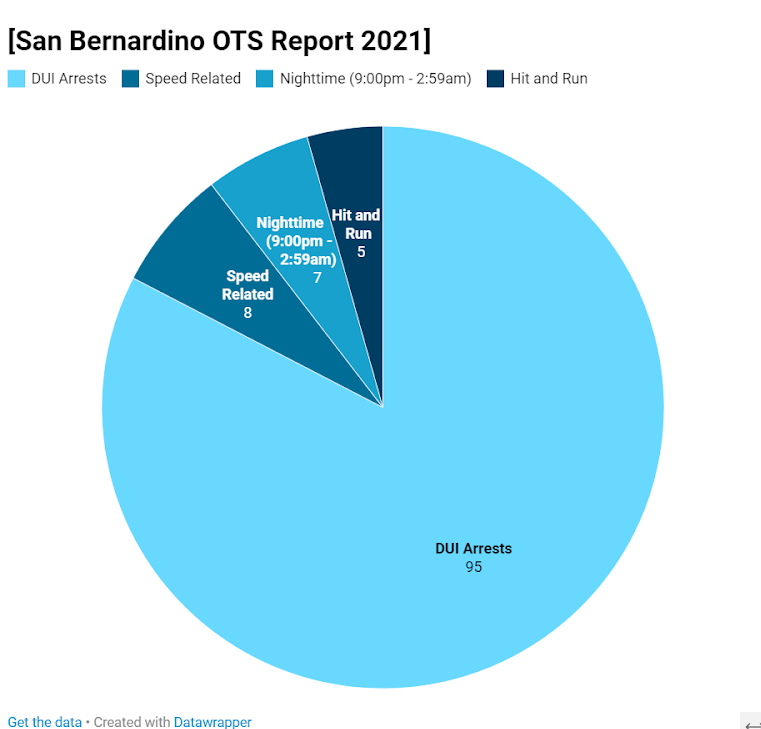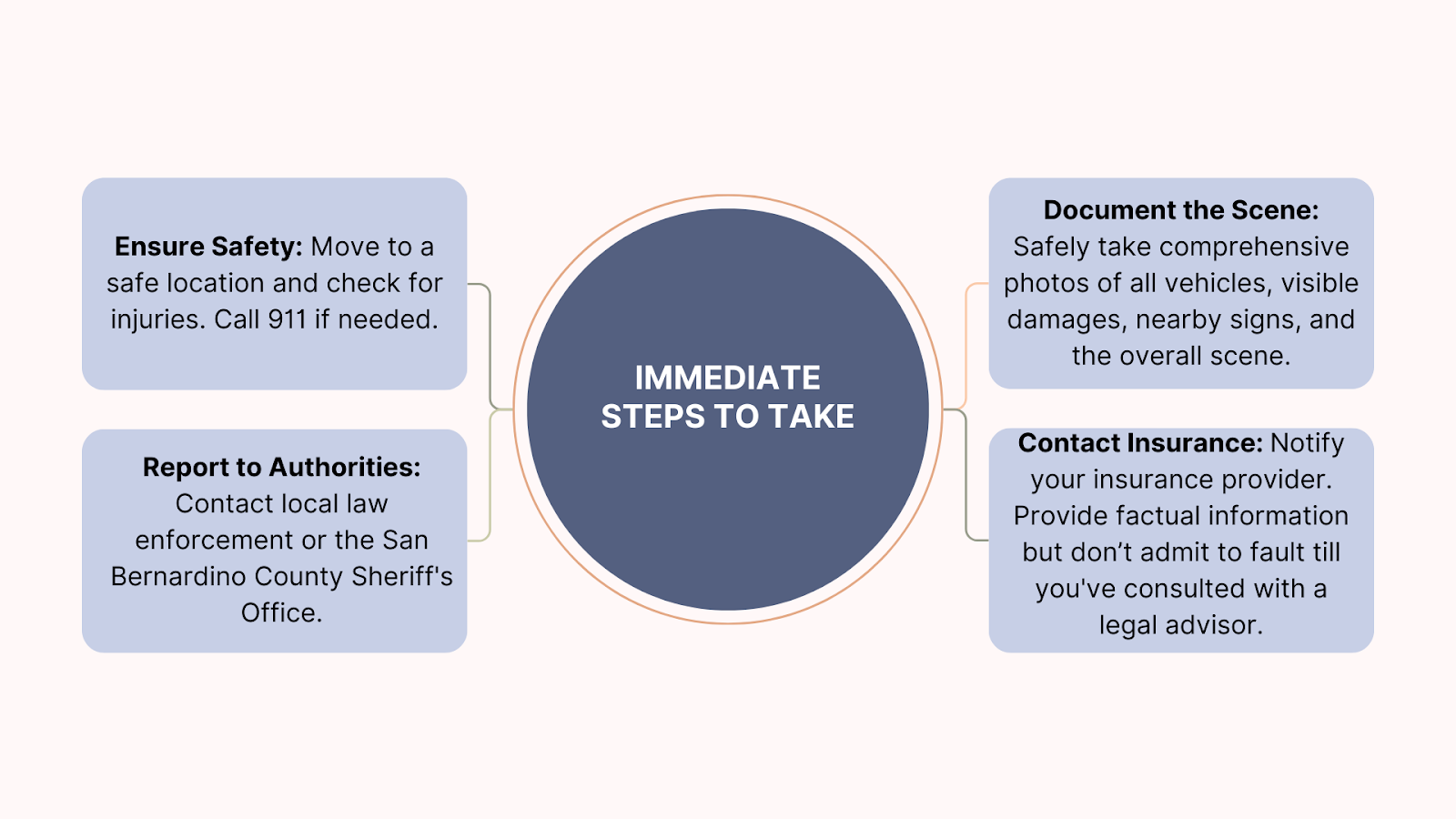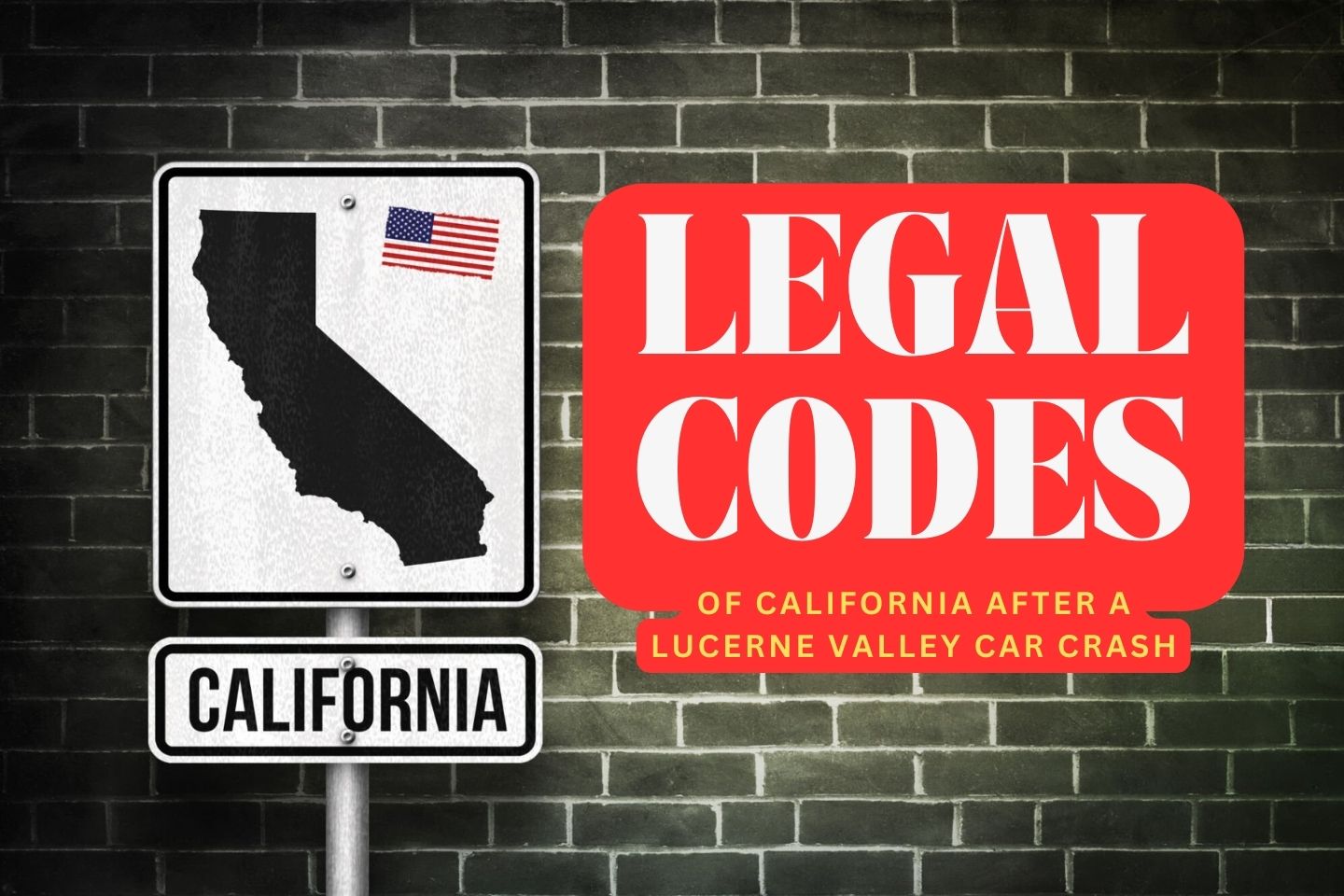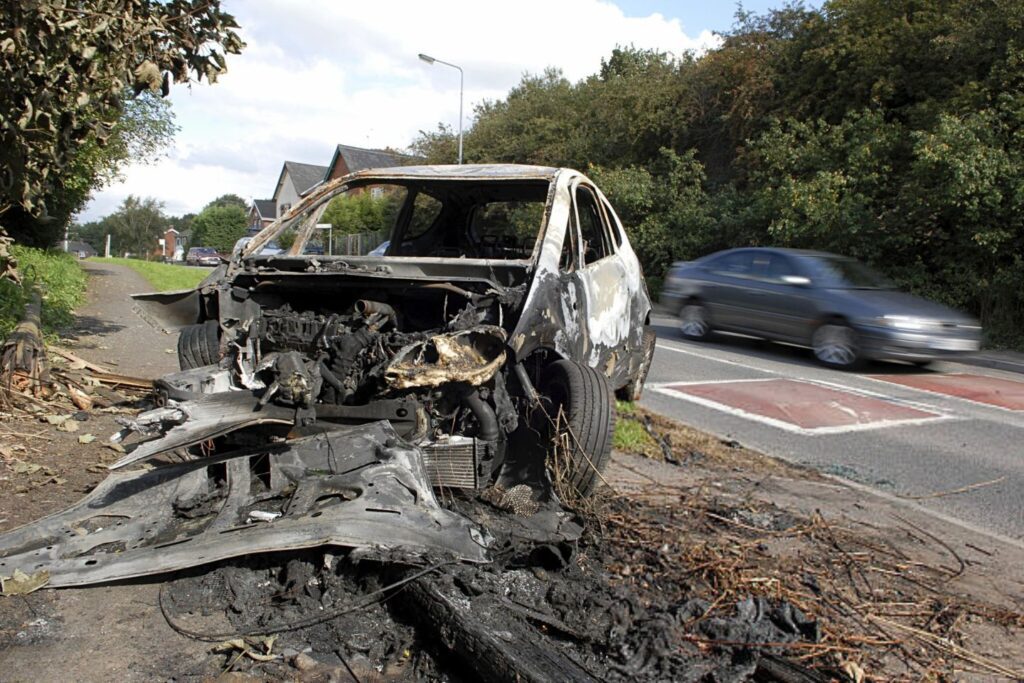Car crashes in Lucerne Valley pose a pressing concern. In 2021 alone, Lucerne Valley experienced 22 tragic fatalities due to car crashes, highlighting the urgent need for legal clarity and resolution.
The aftermath of a car crash can be distressing, but it’s important to know that you are not alone through it. Our guide simplifies the process, offering step-by-step instructions on immediate actions, reporting procedures, and legal codes.
Read on to gain practical insights to explore your options and pursue the compensation that you deserve.
Common Causes of Car Crashes in Lucerne Valley
Lucerne Valley sees a mix of different traffic issues, each contributing to the local accident statistics. Understanding the causes behind car crashes in Lucerne Valley, and San Bernardino as a whole is important to develop prevention strategies. Here are the main causes identified by the 2021 OTS report.


- Overspeeding: A significant cause of these accidents is speed-related incidents, with statistics revealing 8 recent accidents, ranking the county at 91 out of 98 in state-wide comparisons. The dangers of high-speed driving cannot be overstated, as it both increases the likelihood of an accident occurring and the severity of the outcome.
- Nighttime Driving: Nighttime driving poses its own set of risks. Limited visibility and a higher probability of encountering drivers under the influence make the hours between 9:00 PM to 2:59 AM particularly hazardous. This is reflected in San Bernardino’s ranking of 60/98 for accidents occurring during these hours.
- Drunk Driving: Driving under the influence (DUI) contributes significantly to the dangers on the road, with the county’s DUI arrest ranking at 27 out of 97, signaling a pervasive issue with alcohol-related accidents.
What to do After a Car Crash in Lucerne Valley
If you find yourself in the unsettling aftermath of a car crash in Lucerne Valley, it’s essential to take immediate, calculated steps. You must ensure safety, report the incident, collect evidence, and contact your insurance provider.
Here’s what you need to do right after an accident, keeping in mind the local laws of San Bernardino County.


Ensure Safety and Immediate Health Concerns
First and foremost, ensure that you and anyone else involved are safe. If you can, move to a secure location away from traffic. Check for injuries and call 911 if the accident has resulted in any physical injuries—your well-being is the top priority. Moreover, it is a legal requirement to ensure that emergency medical authorities are informed in case the accident has caused any injuries.
- Relevant Law: According to California Vehicle Code 20001, it’s mandatory to stop if you are involved in an accident that results in injury or death. Moreover, you must provide reasonable assistance to any person injured in the accident, which may include arranging for or transporting the injured to medical treatment if it is apparent that treatment is necessary or if it is requested by the injured person.
Report the Incident to Local Authorities
In San Bernardino County, you’re required to report any accident involving injury or significant property damage to law enforcement. A police report from either the local Lucerne Valley Station or the San Bernardino County Sheriff’s Office is a vital document when pursuing legal recourse.
- Relevant Law: Under California Vehicle Code 20008, the driver of any vehicle involved in an accident resulting in injury to or death of any person must make a written report of the crash. This report must be submitted to the California Highway Patrol within 24 hours of the incident. For accidents that involve property damage, California Vehicle Code 16000 requires reporting to the Department of Motor Vehicles. This applies if there is property damage of more than $1,000 or if there are any injuries, regardless of how minor they appear.
If you’re overwhelmed by the process, don’t hesitate to contact us at the Personal Injury Center. We’ll promptly connect you with personal injury attorneys in your region to ensure that you get the justice you deserve.
Collect and Document Evidence
Gather all the evidence you can at the scene if you can do so safely. Use your phone to take pictures of the vehicles, any landmarks, and road conditions. Lucerne Valley’s desert landscape can influence factors like visibility and road traction, which could be pertinent to your case.
Contact Your Insurance Provider
Notify your insurer about the accident. Given the jurisdiction, your coverage may have specific stipulations for incidents occurring in Lucerne Valley. Provide them with the facts but refrain from admitting fault or giving detailed statements until you’ve spoken with a lawyer.
Understanding Legal Codes of California After a Lucerne Valley Car Crash


Following a car crash in Lucerne Valley, being aware of the relevant legal codes beyond the initial reporting and assistance laws is critical. Let’s explore California Vehicle Codes and what they mean for you in practical terms.
- Financial Responsibility (California Vehicle Code 16020-16033): After an accident, proving that you can cover the costs of any damages or injuries is mandatory. Under these sections, all drivers must be able to show financial responsibility, typically through car insurance. Failing to have proper insurance can lead to fines and suspension of your vehicle registration or driver’s license.
- Statute of Limitations (California Code of Civil Procedure 335.1): In California, you have a limited window to file a lawsuit after an accident. This code specifies that you have two years from the date of the incident to file a personal injury claim and three years to file for property damage. Missing these deadlines can mean losing your right to legal recourse.
- Comparative Fault (California Civil Code 1431.2): California follows a “pure comparative negligence” rule. If you’re found to be partially at fault for the accident, your compensation might be reduced by your percentage of fault. Simply put, California allows you to claim damages even if you share some blame. But here’s the catch: any compensation you receive will be less, based on how much of the accident was your fault. If you’re 30% to blame, your compensation could be reduced by 30%.
- Uninsured Motorist Protection (California Insurance Code 11580.2): This law is critical if the at-fault driver lacks insurance. It requires insurers to offer uninsured motorist protection as part of your auto insurance policy. So, if you get hit by someone without insurance, this law requires your insurance company to offer you coverage for such scenarios. It’s a safety net to ensure you’re covered if the other person can’t pay for the damage they caused.
Navigating these laws can be a confusing process, but you don’t have to do it alone. The experts at the Personal Injury Center are here to serve as your guide, helping you connect with personal injury attorneys who know the ins and outs of Lucerne Valley’s legal landscape. Reach out for prompt assistance to simplify your legal journey.
Lucerne Valley Car Crash Dispute Solutions
In the aftermath of a car crash in Lucerne Valley, understanding alternative dispute resolution methods such as mediation and arbitration can be crucial for achieving timely and fair resolutions outside of the courtroom.
Mediation
Mediation offers a collaborative approach to resolving disputes, facilitated by a neutral third party, the mediator, who guides discussions between the parties involved in Lucerne Valley car crash cases.
Here’s what the mediation process typically looks like.
- Neutral Mediator: Typically, the mediator is a trained professional with expertise in conflict resolution and negotiation techniques. The mediator does not represent either party and remains impartial throughout the process.
- Mediation Process: The process usually begins with an introductory session where the mediator outlines the ground rules and sets expectations. Each party then has the opportunity to present their perspectives and concerns in a controlled and respectful environment. The mediator helps identify common interests, explores potential solutions, and encourages constructive dialogue.
- Joint and Separate Sessions: Mediation may involve joint sessions where both parties and the mediator convene together to discuss issues openly. Additionally, the mediator may conduct separate sessions, known as caucuses, where they meet with each party privately to discuss confidential matters and facilitate communication.
- Negotiation and Agreement: Throughout the mediation process, parties engage in negotiation, exploring various options and alternatives to reach a mutually acceptable agreement. The mediator assists in clarifying misunderstandings, managing emotions, and ensuring that all parties have a fair opportunity to express their concerns. If an agreement is reached, it is typically documented in writing and signed by the parties, binding them to its terms.
Arbitration


Arbitration provides a structured and adjudicative approach to resolving disputes, typically conducted by an arbitrator or a panel of arbitrators, chosen by the parties involved in Lucerne Valley car crash cases.
Here’s an overview of the procedure:
- Arbitral Panel: In some cases, car crash cases may involve a panel of arbitrators, usually consisting of one or more neutral professionals with expertise in relevant legal domains. The parties may agree upon the composition of the panel or delegate the selection process to a neutral arbitration organization.
- Evidence and Testimony: Unlike mediation, arbitration often follows a more formalized structure resembling a court trial. Parties present their evidence, including witness testimony, expert reports, and documentation related to the car crash incident in Lucerne Valley. The arbitrator(s) evaluate the evidence and listen to testimonies presented by both sides.
- Decision Making: After considering all evidence and arguments presented by the parties, the arbitrator(s) render a decision, known as an arbitral award. The award is typically final and binding, meaning that parties are legally obligated to comply with its terms, subject to limited grounds for appeal as specified by applicable laws or arbitration agreements.
- Enforcement of Awards: Once the arbitral award is issued, parties may seek enforcement through the court system if necessary. Arbitral awards generally carry the same weight as court judgments and can be enforced through judicial proceedings if a party fails to comply voluntarily.
If you’ve been injured in a car crash and need legal guidance, the Personal Injury Center can help connect you with expert attorneys in your region. Contact us today to navigate the process and seek the compensation you deserve.
Key Takeaways
|



